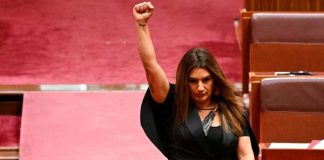The formation of the Left Renewal faction, to begin organising against the right inside the NSW Greens, has exposed the ongoing battle between left and right inside the party.
The NSW branch has been a bulwark against the rightward push of The Greens nationally. But 2016 saw a series of body-blows against the left. In August the right-wing candidate Justin Field won pre-selection in John Kaye’s former seat in the NSW parliament, after his tragic death deprived the party of one of its most left-wing MPs. Then in December the left’s candidate Kelly Marks lost to the more conservative candidate, Dawn Walker, in the pre-selection for another spot in the NSW upper house.
The right inside the party is increasingly confident. The left needs to get its act together, or the right will eventually take control of the NSW branch, and the whole party will slide even further to the right. Building a faction is not undemocratic; it is needed to fight for democracy within the party. The right essentially has its faction organised through MP’s offices.
The attack by former Greens’ leader Christine Milne on Left Renewal and NSW left-wing Greens MPs Lee Rhiannon and David Shoebridge is more evidence of the concerted and public campaign being waged by the right of the party.
Milne’s demand that the two MP’s “call out” Left Renewal and other critics of the party’s direction is a continuation of what has become a concerted campaign by the national leadership and NSW right-wing MPs against the left of the party.
Last July, former leader Bob Brown called on Lee Rhiannon to resign as a Senator just weeks after her re-election. This was followed in September by NSW Greens Upper House member Jeremy Buckingham using the 7.30 report to attack supposedly “unaccountable officials” in NSW.
The Greens’ national leadership has tried to move party policy to the right over issues like inheritance tax, funding for private schools, and with the recent deal with Turnbull over pensions.
Current party leader Richard Di Natale wants to move The Greens further in the direction of parliamentary pragmatism, using the party’s parliamentary numbers to cut deals with the government to “get outcomes” and focus exclusively on getting more MPs elected.
Bob Brown and Christine Milne began this shift to the “respectable centre”, signing a deal with the minority Gillard government in 2010. Even after Gillard was discredited, The Greens continued to claim credit for the “achievements” of the Gillard minority government despite the failures of the carbon tax, the resource rent tax and worsening policies on refugees.
Getting organised
Left Renewal’s Facebook page has attracted over 2000 likes and there is strong interest in their events precisely because thousands of Greens members and supporters are alarmed at The Greens moving away from involvement in the social movements and their protest roots.
These grassroots members and supporters need to be organised into a much broader fight against the rightward drift of the party.
But it is not just a matter of getting the left organised. The Greens have consistently won support among those looking for a left-wing alternative to the conservatism and neo-liberal polices of the Labor Party.
The left in The Greens has to seek to organise them around a platform based on building the strong, fighting left party that they want.
Many NSW Greens MPs are vocal advocates of social movements and regular speakers at demonstrations. But the record of the NSW Greens as an organisation is quite different. The party is geared towards electoral contests, and mobilising members and supporters to build movements and lead industrial struggles comes a very distant second.
The left needs to use issues like refugees, union politics and anti-racism to build a network of members with a shared vision for shifting The Greens to becoming an activist party.
Allies for this must be found in each branch and priority mobilisations selected that allow the left to begin to turn the branches into spaces that publicly build demonstrations and campaigns.
Focusing on the working class and taking up economic issues is also crucial to whether the party is to grow into a clearly left-wing force. There is serious disillusionment with Labor amongst many of its working class supporters, but The Greens are yet to become a natural home for working class people. Winning Labor’s base means actively campaigning against the ABCC (the special police force for the construction unions), organising within the unions and focusing on issues like penalty rates, the right to strike, Medicare and welfare.
Unless the left gets organised and begins to fight for a political approach that goes beyond electoralism, the right will keep on winning.





